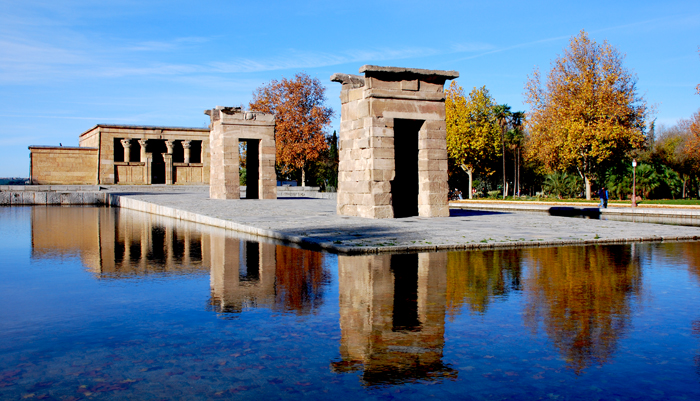
Even in a cosmopolitan city like Madrid, we can still be surprised by what is hidden in the Cuartel de la Montaña park: the Temple of Debod, a monument that is over two thousand years old, which was brought to Spain from Egypt, stone by stone and carefully reconstructed in the capital.
The sanctuary, which was located on the shores of the Nile, was threatened by the construction of the Aswan High Dam, so UNESCO launched a call to save the endangered monuments. Spain was one of the destinations of these architectural works in gratitude for its collaboration in saving Abu Simbel.
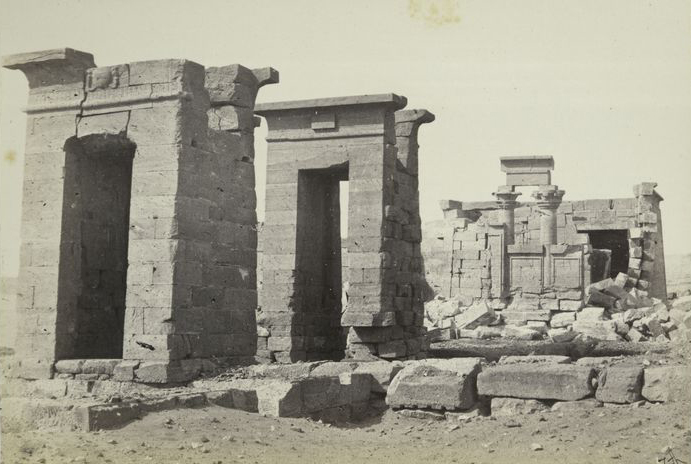 In Egypt
In Egypt
The Temple of Debod, open to the public since 1972, is one of the few monuments of its kind that can be seen outside Egypt, but when it was moved to Spain, its original orientation, in other words, east to west, was retained. Models, videos and audio-visual projections are exhibited on the walls to help understand the meaning of the location of the splendid building, its decorative motives and to discover its history. In this way, all onlookers will be captivated by the charm of this millenary culture.
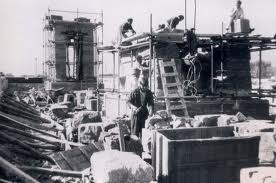
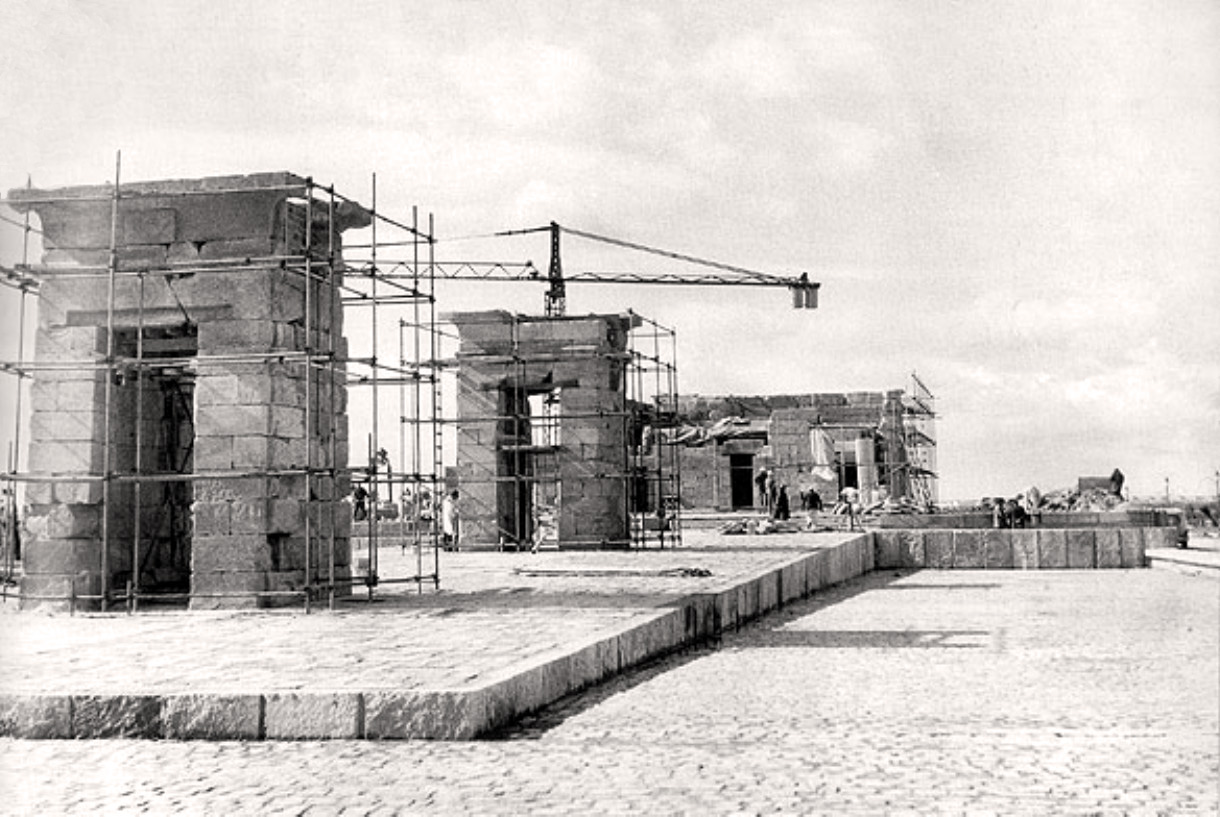
One of the sovereigns of the kingdom of Meroe, in modern-day Sudan, which dominated the Valley of the Nile for centuries, was the first builder of Debod. His name was Adijalamani and the chapel was built during his reign; this was the original heart of the temple, called the Chapel of the Reliefs where epigraphic references are made to an “Ammon de Debod”. Many changes have occurred since its creation. Pharaohs from subsequent reigns added rooms until it took on the appearance that can be seen today, and the cult of the Ammon of Debod was replaced with the cult of the goddess Isis.
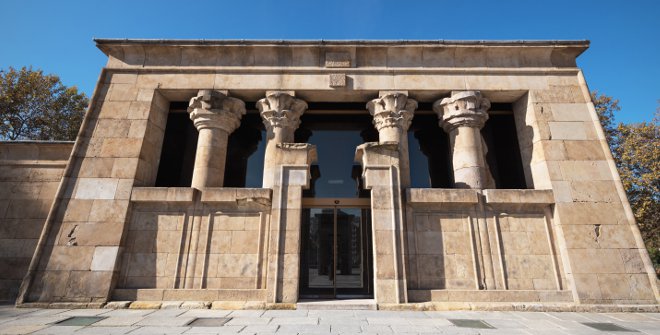
Almost two thousand years ago, the temple of Debod started its magical-religious work with each New Year. At the start of each year, on 15th June according to our Gregorian calendar, when the star Sirius appeared at dawn, Egyptian priests interpreted that the goddess Isis was announcing the start of the flooding of the Nile. On this date, the priests of Debod marched the statue of the deity in a procession up to the centre of the chapel of Osiris to charge it with energy for the rest of the year.
Initially, this centre of pilgrimage, one of the most important ones in Egypt, was dedicated to the gods Ammon and Isis, which can be seen in the reliefs and bas-reliefs that decorate the inside of the sanctuary. Many of the images that decorated the temple disappeared due to being underwater for nine months after the first Aswan dam was built. The remodelling effort was not able to fully recover the iconography of this place of worship, which was built for the deity and which only the priests could access. Today, thousands of visitors have been allowed to access this small part of Egypt and return for a moment to the year 2000 B.C.
The beautiful surroundings of the Temple and the fact that entrance is free are extra motivations for visiting this great place. If, in addition, you want to get to know the sanctuary properly, guided tours can be arranged with a prior appointment.
Ver mapa más grande